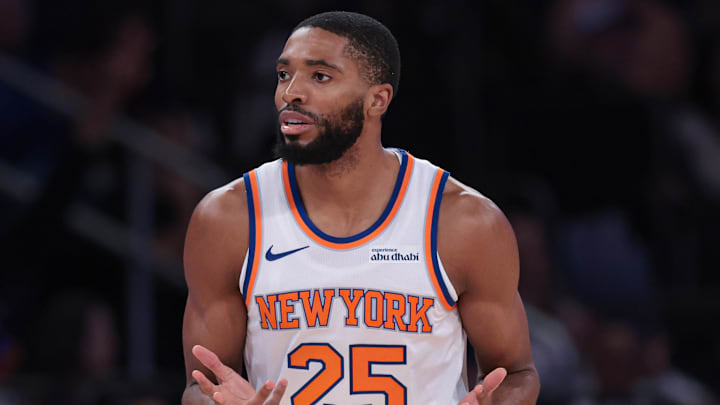The New York Knicks’ decision to sign Mikal Bridges to a four-year, $150 million extension was met with a vast variety of reactions, including those that viewed it as unnecessary, too expensive, or even a flat-out mistake. These vantage points always missed the mark—and misread the market. Salary-cap guru Yossi Gozlan of the Third Apron podcast and Substack just explained why.
“I thought even the full amount he could have gotten, that $156 million, was pretty favorable to the Knicks,” Gozlan explains during a recent appearance on The Putback with Ian Begley, at around the 27:22 mark. “I think he’s probably worth a little more than that. I feel like his production is a little marginalized, being a third and fourth option on the Knicks, versus when he was a higher option on the Nets and Suns. But as far as his impact goes, especially in the playoffs, I think if he hit the open market [next summer], there’s a possibility he could have gotten a little more…And the fact that they were able to get him even on a little bit less than his maximum, that’s just [a] great negotiation on their part.”
The “discount” Bridges accepted is trolled to no end. His max extension would have clocked in at $156.2 million, a mere $6 million less than he’s receiving.
Still, every little bit counts—especially for the Knicks. Their current cap sheet is proof. They needed Guerschon Yabusele to accept less than the full mini mid-level exception to facilitate fielding a 14-man roster. And their margins beneath the second apron are so thin, they need to shed money just to afford a pro-rated minimum deal if they want to fill out the 15th slot.
Like Gozlan notes, though, Bridges' discount isn’t the root of his value. The fact he signed this extension at all, rather than wait for free agency, is a huge deal for the Knicks.
Mikal Bridges would have gotten more in 2026 free agency
We do not need to couch Bridges’ future market with “maybes.” He would have gotten more.
Next year’s cap-space market has the potential to overblown, but more teams will have money to burn in free agency overall. Players who typify the three-and-D-plus-more skill set, and can close games for a good team always get paid.
With that in mind, here’s a look at Bridges’ max-contract options would have been next summer:
- Four-year max with the Knicks: $223.1 million
- Five-year max with the Knicks: $288.8 million
- Four-year max with another team: $214.1 million
There’s no guarantee another team would have come in with their max $214 million offer. But there is a lot of room between $150 million and $214 million. Bridges could have easily cost $5 to $10 million more per year if he reached the open market.
The Bridges extension is going to have trade value
Gozlan also touches on how well Bridges’ contract will age.
“In the long term, if they need to make some changes, and that might involve him, I think that’s a very tradeable contract,” he explains. “I think it’s kind of in line with the contract he’s [on] now. I feel like, as long as he continues to play at this level, that would be a very appealing contract to interested teams out there.”
This is spot-on. Bridges is the 76th-highest paid player in the NBA this season, according to Spotrac. He is now slated to be the 53rd-highest paid player next year, a ranking that should only tumble as time goes on.
For all the hullabaloo over how the Knicks chose extending him over landing Giannis Antetokounmpo this past offseason, Bridges may actually be a more valuable trade chip thanks to his new deal. Not only can he count as a larger outgoing salary, but his price point is locked for at least another three years (2028-29 player option).
Heck, if he keeps playing the way he has to open the season, Bridges will once again find himself in the best-value contracts discussion. And in that entirely plausible scenario, we’d all be asking ourselves the same question: Why would the Knicks want to trade him at all?
